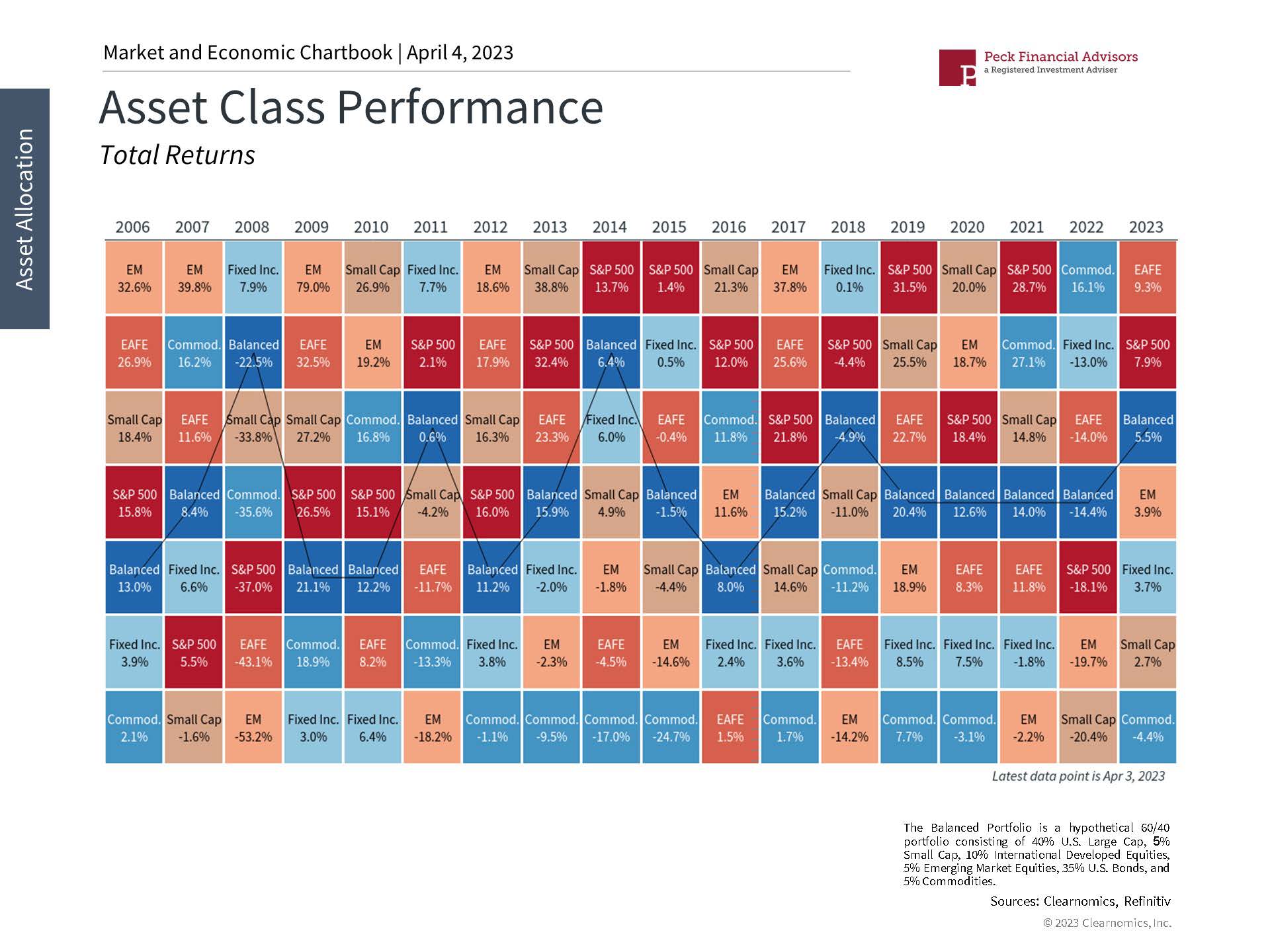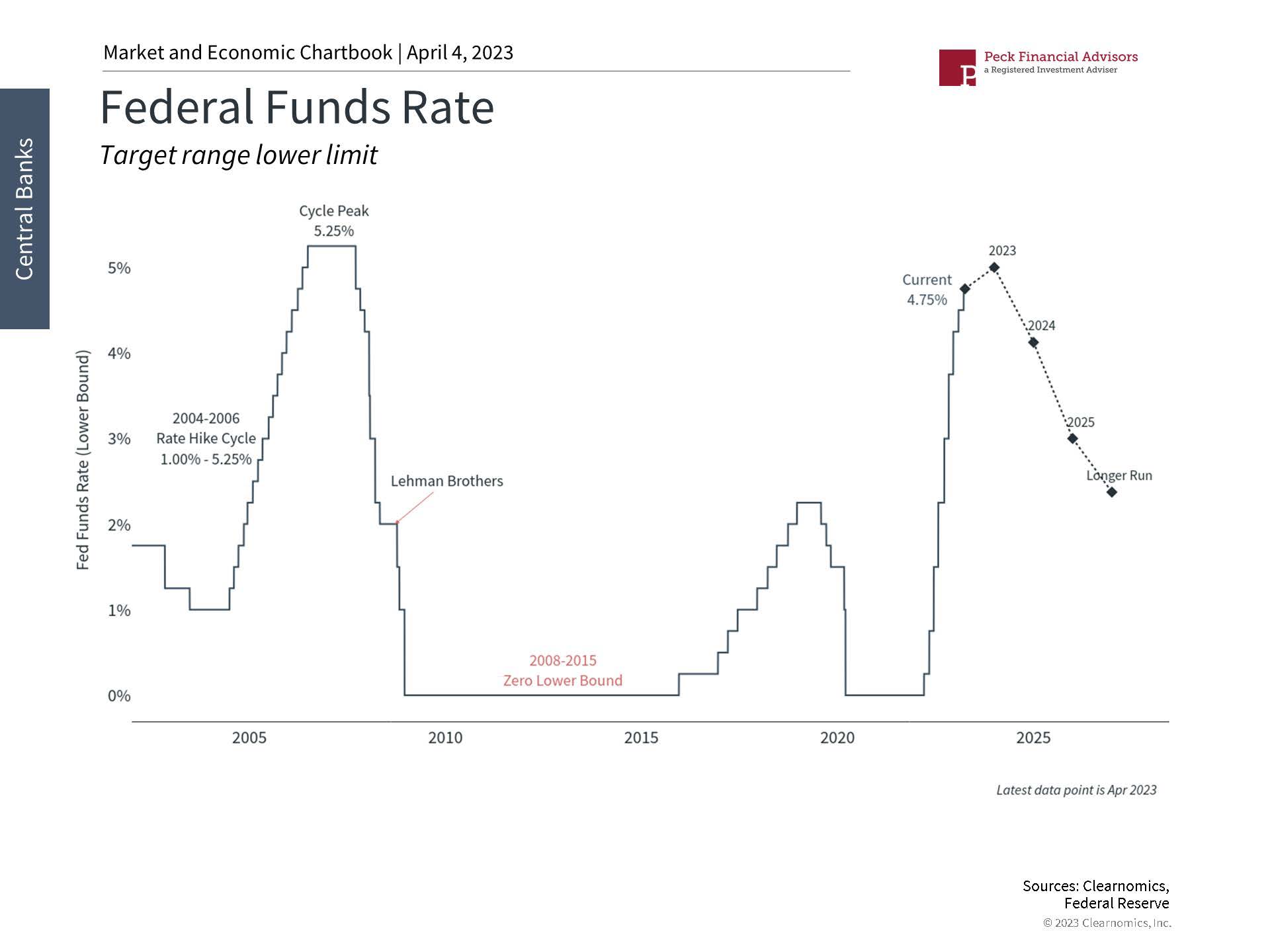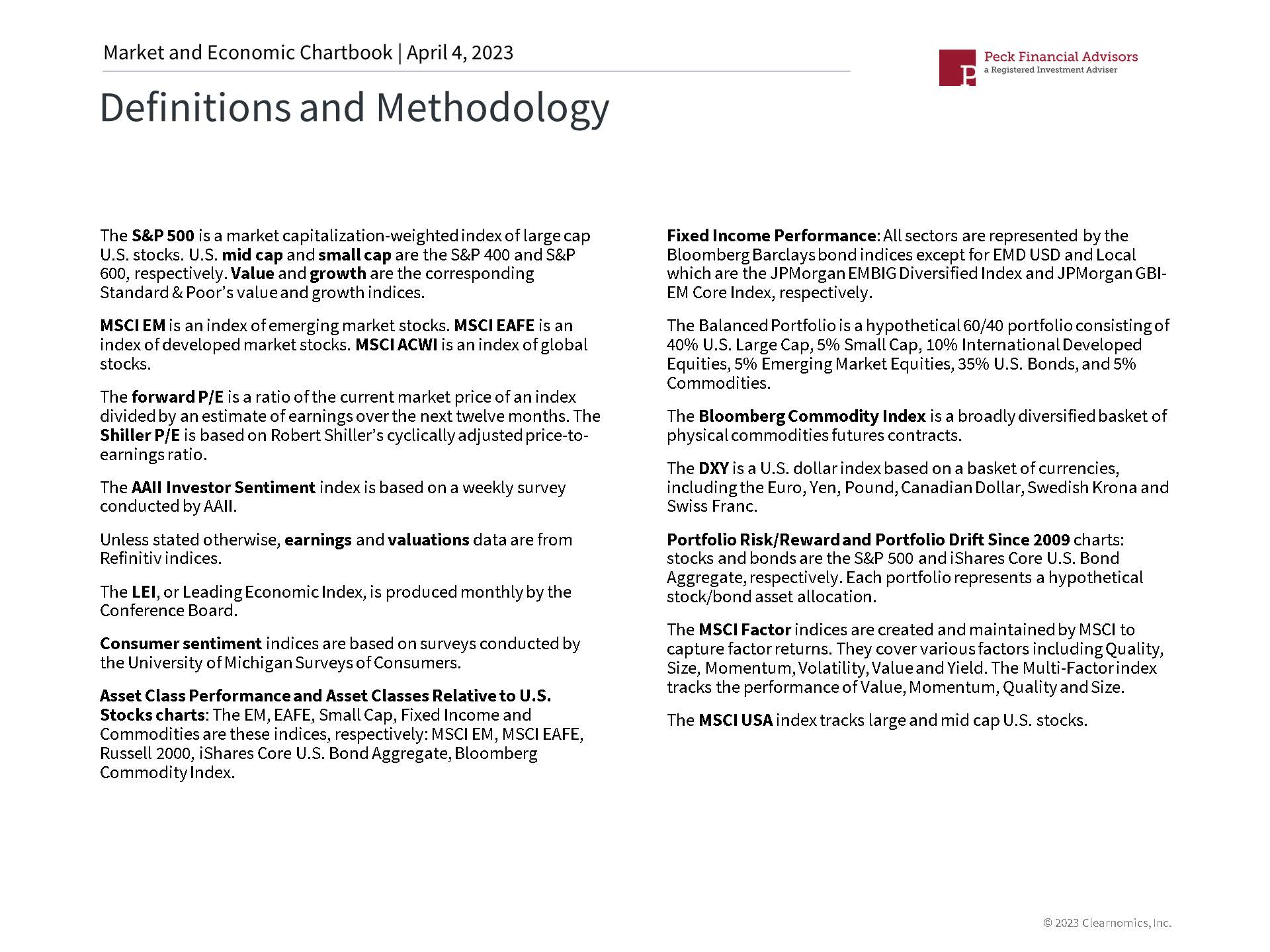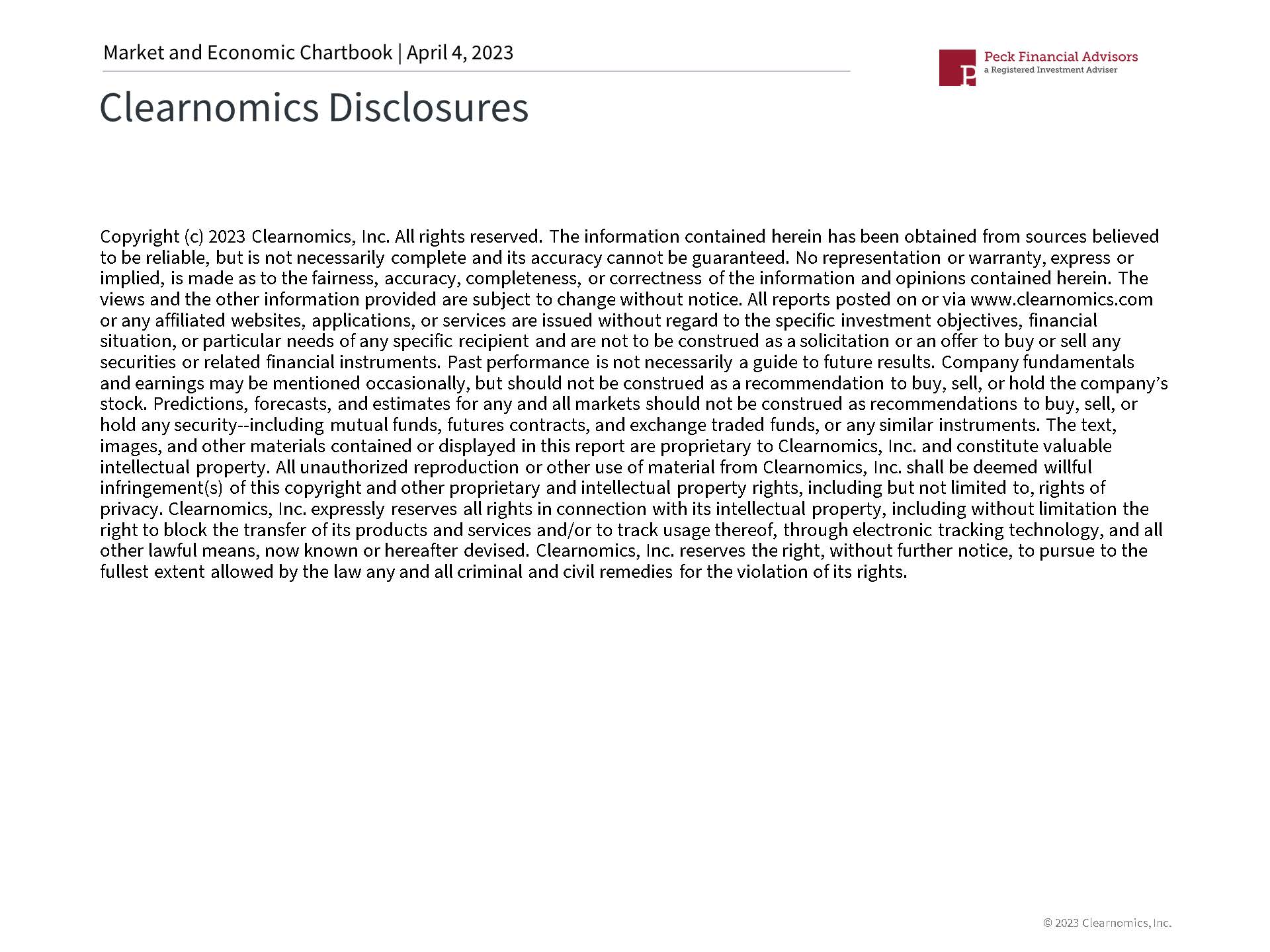Q1 2023 Client Communication
In the last few years, portfolios and financial plans have been tested by the pandemic, the highest inflation rates since the 1980s, global conflicts, political uncertainty, asset bubbles, and swiftly shifting monetary policy. Even when times are otherwise calm and markets are steadily rising, including from 2009 to 2020, investors and the media always find reasons to be worried. So, while it's important to understand the individual issues, it's perhaps more important to maintain a broader perspective based on the lessons of history.
Of the various challenges investors face today, the banking crisis was perhaps the biggest unforeseen event. It's now clear that FDIC-insured banks hold bonds that are worth hundreds of billions less due to rising interest rates. Banks such as Silicon Valley Bank and Signature Bank had customers concentrated in specific industries, such as tech and crypto, that made them susceptible to liquidity problems and bank runs. In Europe, Credit Suisse may have had strong capital and liquidity ratios, but ongoing problems made it susceptible to a bank run.
The reality is that the banking crisis will take time to play out. Although modern investors are accustomed to a rapid news cycle, it often takes time for cracks to form, problems to be identified, events to play out, solutions to be implemented, and finally for the system to stabilize.
However, there are reasons for optimism too. The market, economy, and the financial system have been more resilient so far in 2023 than many expected. The job market has been surprisingly strong despite layoffs in tech. Inflation has improved markedly across key areas such as energy and goods. Interest rates rose swiftly early in 2021 and throughout 2022 but have stabilized more recently with the 10-year Treasury yield ending the first quarter at 3.47%. Even the stock market has improved with the S&P 500 having gained 7.6% and 7.5% across the last two quarters.
History shows that markets often turn around when investors least expect it. To put it more strongly, long-term investors are often rewarded precisely because they are willing to accept and manage risk when others are not. Below, we highlight insights to guide investors through the coming months.
1. Balanced portfolios have benefited from both stocks and bonds this year
Although only a quarter has passed, markets are already performing much better than last year. This is because interest rates have been more stable and inflation has improved, supporting both stocks and bonds which returned 7.5% and 3.2%, respectively, through the end of the first quarter. A hypothetical 60/40 portfolio generated 5.1% over this same period, underscoring the continued importance of diversification and long-term thinking.
2. The Fed is expected to slow its pace of rate hikes or to cut rates
The Fed chose to raise rates despite the ongoing banking crisis, in part as a message about their confidence in the financial system. The Fed's latest projections show that officials expect to keep rates high through the rest of 2023. This is in stark contrast with fed funds futures which show implied rate cuts later this year. Either way, this suggests that the Fed is near the end of its rate hike cycle after one of the sharpest jumps in policy rates in history.
The bottom line? While there are ongoing challenges, this is always the case for investors. Staying focused and holding diversified portfolios is still the best way to achieve long-term financial goals. Please don’t hesitate to contact me when questions or concerns arise. - Valerie





